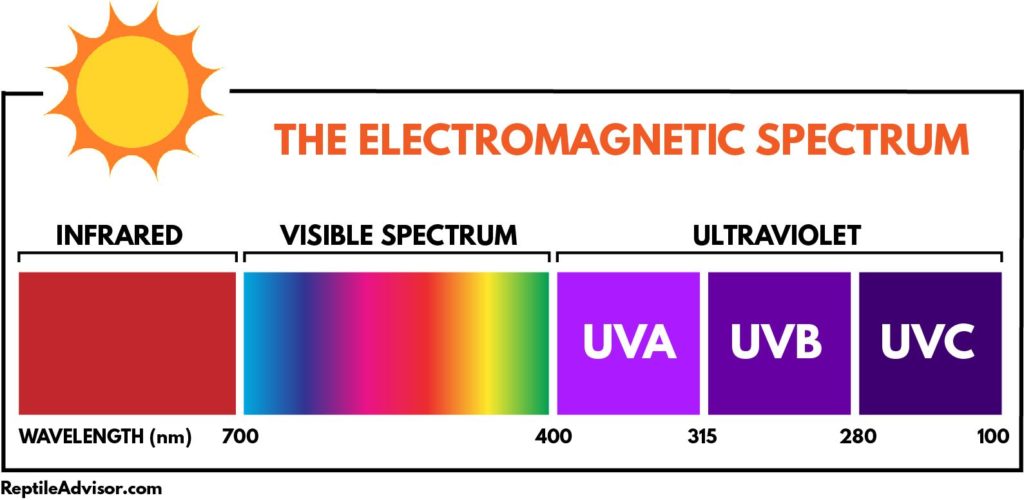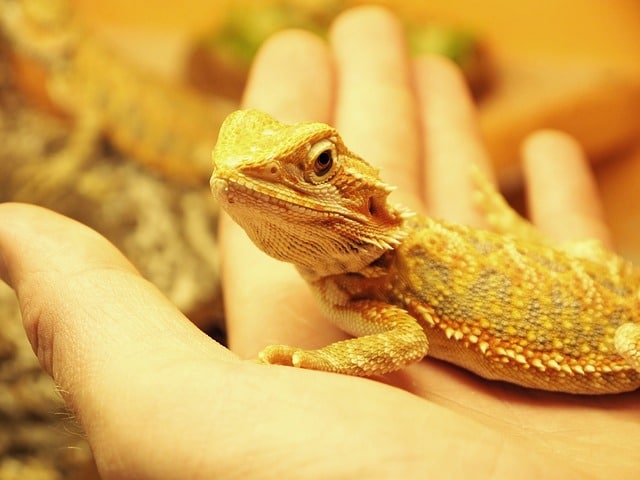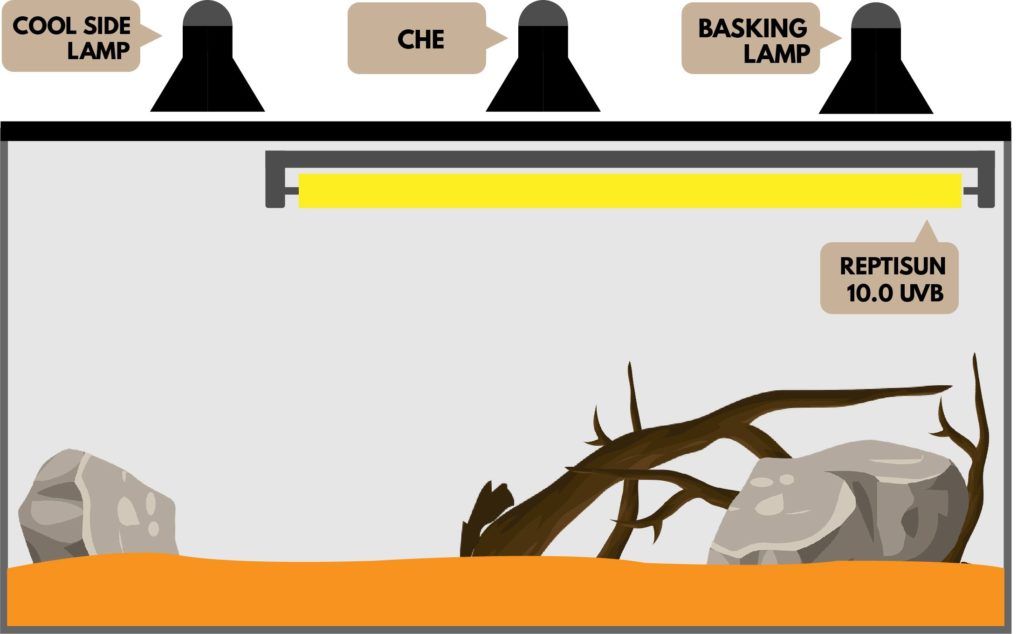Bearded dragons are one of the most popular pet lizard species among reptile keepers, and it’s easy to see why: They’re hardy, relatively docile, easy to feed, and available in several attractive color variations.
In fact, bearded dragons are often heralded as exceptionally good pet lizards – even for novice keepers. But is this accurate or simply the result of overzealous breeders trying to market their offspring?

We’ll take a critical look at the issue below to try to help not only determine whether or not bearded dragons make good pets but if they will fit well into your life.
Quick Navigation
Bearded Basics: General Husbandry of Bearded Dragons
Before we try to determine if bearded dragons make good pets, we need to analyze the basics of their husbandry requirements.
Habitat
Bearded dragons need a roomy habitat that is escape-proof and easy to clean.
Many fledgling keepers use aquariums, which are acceptable, if not ideal.
More experienced keepers typically provide bearded dragons with plastic reptile cages or trough-style enclosures. Others prefer to make custom-built enclosures from scratch.
Check out our step-by-step guide to setting up a perfect Bearded Dragon habitat.
Temperatures
Hailing from Australia, bearded dragons require fairly warm temperatures to thrive.
But in practice, as with most other captive reptiles, keepers are wise to provide a thermal gradient (a range of temperatures) in the habitat.
In other words, the enclosure should feature a very warm “basking spot,” and temperatures should gradually fall with increasing distance.
Accordingly, the bearded dragon can access a wide variety of temperatures by moving through the habitat as necessary.
Different bearded dragon breeders and keepers aim for different temperatures, but generally speaking, you’ll want your bearded dragon’s basking spot to be at least 100 degrees Fahrenheit (and many advanced keepers provide basking spots measuring 120 degrees or more).
The ambient temperatures in the remainder of the habitat should be in the low-80s.
Lighting
Bearded dragons require full-spectrum lighting that includes plenty of light in the UVB portion of the electromagnetic spectrum.

We’ll discuss their lighting needs in more depth later, but deprived of this type of lighting, most bearded dragons will eventually fall ill.
Alternatively, some keepers simply provide their pet with regular access to natural, unfiltered sunlight.
Substrates
You can use a variety of different substrates to keep your bearded dragon healthy and happy. However, most keepers use one of two primary types:
- Reptile Carpet: This is our substrate of choice. Reptile carpet is cheap, looks better than newspaper, and is relatively easy to clean.
- Newspaper: Clean, easy-to-change, and essentially free, newspaper is the substrate of choice for many large-scale breeders and keepers. Paper towels will also work in a similar fashion.
Other keepers use things like orchid bark, AstroTurf or cypress mulch.
The only thing you must be sure to avoid completely is substrates containing cedar wood, as it emits toxic fumes that may sicken or kill your pet.
Furniture
Bearded dragons may survive, but they won’t thrive, in barren habitats.
Accordingly, keepers should always provide their pet with one or more climbing opportunities in the habitat, as wild bearded dragons are semi-arboreal and climb quite a bit.
In fact, bearded dragons often scale logs, trees, fence posts, and rocks to reach a good basking spot.
So, try to accomplish the same thing in your pet’s habitat, by placing some climbing sticks or rocks beneath the basking light.
Additional Reading: 15 Awesome Accessories and Toys for your Bearded Dragon.
Feeding
Bearded dragons require quite a bit of food to remain healthy. And, as omnivores, this will include plant and animal material.
You’ll want to adjust your bearded dragon’s feeding schedule and diet based on his age. Below, we’ll detail two typical feeding regimens:
- Hatchlings and Juveniles – Young bearded dragons primarily subsist on insect prey, but it is also important to provide them with plenty of fruits and vegetables. This will not only help keep them healthy, but it’ll also help instill good eating habits for later in your pet’s life when he’ll need to consume more vegetation. Usually, you’ll want to feed young dragons insects one to three times each day and offer a small amount of fruits and vegetables each morning.
- Adults – Adult bearded dragons will consume huge quantities of insects, but the bulk of their diet should typically take the form of nutritious fruits and vegetables, such as collard greens, shaved carrots, and squash. Vegetables should usually be offered on a daily basis, while crickets, roaches, superworms or other insects can be offered three times per week or so.
If you need to learn more about feeding your beardie a balanced diet, read our Bearded Dragon Diet Guide.
Water
Even though they come from exceptionally dry habitats, bearded dragons still require fresh water to remain healthy.
They’ll satisfy a large percentage of their water needs via the food they eat (especially the vegetables in their diet), but they’ll also need drinking water.
Some keepers provide water in a standard water dish, but some bearded dragons are reluctant to drink standing water.
Accordingly, many keepers will use a spray bottle to mist their lizards on a daily basis.
Most bearded dragons will adopt stereotypical drinking postures when misted and begin greedily lapping up the water.
The Good: Reasons Bearded Dragons Make Great Pets
Now that we’ve explained some of the basics of bearded dragon husbandry, it is time to look at some of the traits that make them so appealing to reptile enthusiasts.
Bearded Dragons Reach Reasonable Sizes
One of the first things prospective keepers must consider when trying to choose a species to maintain is its ultimate size.
Lizards that are too large may be impossible to house properly and handle safely, while those that are too small can be difficult to feed and handle.
Fortunately, bearded dragons reach nearly ideal sizes that lie between these two extremes.
Hatchling bearded dragons are only about 3 to 5 inches in length, but most breeders will wait to offer them for sale until they’re about 6 weeks of age.
At this point, most will measure about 6 to 7 inches in length.
Eventually, most bearded dragons will eventually reach lengths between 18 and 24 inches, with their tail representing about half of this total.
Lizards in this size range are easy and enjoyable to handle, yet they aren’t large enough to require unrealistically large housing or represent a serious threat to the keeper’s safety.
Bearded Dragons Are Easy to Handle

Many reptile keepers enjoy handling their pets, but this is not appropriate for all species.
Some reptiles are dangerous to handle, while others are too flighty, defensive or wiggly for regular interaction.
Fortunately for lizard enthusiasts, bearded dragons are typically quite easy and enjoyable to handle.
There are certainly exceptions, and you may occasionally stumble across a dragon that reacts poorly when held in the hand, but most can be accurately described as “stoic.”
Bearded dragons probably do not like being handled (they don’t sit in their habitat all day waiting for their owner to come home and cuddle with them), but the vast majority appear to tolerate it without much fuss.
In fact, they’ll typically sit relatively motionless and just kind of check things out, look around, and maybe taste their keeper’s hand with a few tongue flicks.
You still shouldn’t hold your bearded dragon too frequently, as this can cause your pet a bit of stress, which may reduce his immune system’s ability to operate at peak efficiency.
The average bearded dragon will handle 10 minutes of handling per day without issue.
Bearded Dragons Are Easy to Feed
Some reptile species have a number of positive traits, but their feeding habits make them difficult to impossible to keep.
For example, slug-eating snakes, egg-eating snakes, caiman lizards, and many others consume foods that are very difficult for keepers to source.
Other reptiles and amphibians are so small that it is difficult to find prey items that are small enough to serve as food.
But bearded dragons are extremely opportunistic feeders, who will typically eat just about any bug (or any other type of small creature) you put in front of them.
Most will also consume a variety of different fruits and vegetables, unlike some other omnivores or herbivores, who seem to have strong preferences.
Additionally, by the time most bearded dragons are offered for sale, they’re already large enough to eat the “small” crickets sold in most pet shops.
Bearded Dragons Thrive at a Range of Humidity Levels
Bearded dragons hail from relatively arid habitats, but they’ll typically adapt to varying humidity levels in captivity.
This makes them especially attractive for novice keepers, who’ve yet to master the ins and outs of humidity management.
Essentially, you can keep bearded dragons in the driest habitat you like, as long as they’re provided plenty of water.
It may be advisable to bathe your dragon once per week or so if you maintain a particularly dry habitat, just to be doubly sure your lizard is getting enough water.
Weekly baths will also help ensure your pet sheds properly.
Conversely, while you should never keep a bearded dragon in a rainforest-style habitat with moisture dripping from the enclosure walls, most will tolerate the moderately high humidity levels found in some homes in the southeastern U.S. or the Pacific Northwest.
Just be sure that your lizard’s substrate and enclosure walls remain dry for most of the time, and you shouldn’t have any problems.
Bearded Dragons Grow Quickly
Most reptiles grow at a slow rate relative to birds and mammals.
This can be quite discouraging for some keepers, who are forced to wait several years for their pet to reach adult size.
However, bearded dragons grow pretty quickly by reptilian standards.
Most should reach their adult size in about 12 to 18 months, and well-fed individuals raised by skilled keepers often reach adult sizes in as little as 6 months.
Of course, bearded dragons are all individuals, and some grow more quickly than others. Nevertheless, as a general rule, bearded dragons are fast growers.
The Not-So-Good: Challenges Bearded Dragon Owners Face
As you can see, there are a lot of characteristics that make bearded dragons very attractive to keepers.
However, they certainly aren’t perfect, and they do exhibit a few things that can make them challenging for pet owners to maintain.
We’ll explore some of the biggest challenges you may face while keeping a bearded dragon below.
Bearded Dragons Require Special Lighting
Wild bearded dragons are heliothermic (“sun-loving”) lizards who spend significant portions of their day basking in natural, unfiltered sunlight.
This not only allows them to warm up and achieve proper body temperatures, but it also helps the lizards produce Vitamin D3 (the “active” form of the vitamin).
This Vitamin D3 helps the lizards to use the calcium they get from their diet. Without it, they’ll often suffer from bone disorders, which can eventually prove fatal.
To get around this, bearded dragon keepers must do one of two things:
- Install special lights over the enclosure to replicate the sun’s natural spectrum. Specifically, this means using lights that produce rays in the UVB portion of the spectrum.
- Provide their pet with regular access to natural, unfiltered sunlight. This is likely not the most practical solution.

Adding full-spectrum lights to your pet’s enclosure isn’t terribly difficult, but it does represent an additional expense that owners of nocturnal lizards don’t have to worry about.
If you’re interested in learning more about lighting requirements, check out our complete Bearded Dragon Lighting Guide.
Bearded Dragons Require Copious Amounts of Food
As mentioned earlier, bearded dragons are often voracious eaters, who’ll quickly pounce on edible plants and animals whenever they’re provided.
These healthy appetites are awesome for keepers who’re used to maintaining picky species, who have very specific preferences.
However, the flip side of this coin is that a healthy bearded dragon will eat you out of house and home if you give them a chance.
For example, a healthy adult dragon may consume several dozen crickets in a single meal. Over the course of a week, you may find it necessary to purchase a few hundred of the insects (as well as plenty of fresh produce) to keep your pet satiated.
This will obviously represent a financial burden, but it also means that you’ll need to maintain a large number of insects, so you don’t have to go to the pet store several times each week.
This means you’ll need to set up an entirely separate enclosure and clean it regularly.
Bearded Dragons Produce a Lot of Waste
All of the food that goes down your pet’s gullet will eventually end up coming out the other end.
This is obviously true of all pet reptiles, but because bearded dragons consume so much food, they produce an incredible amount of waste.
Most bearded dragons will defecate and release urates (the reptilian equivalent of urine) several times each day.
This means that you’ll need to clean your bearded dragon’s enclosure very regularly to prevent the habitat from becoming bacteria-laden and unhealthy.
Your choice of substrate will influence the amount of effort you’ll have to put into these cleanings.
If you use some type of sand, you can sift through the substrate with a screen (much like you would sift cat litter) once or twice per day.
On the other hand, if you use newspaper or some other one-piece substrate, you’ll end up needing to change the paper one to three times each day.
Bearded Dragons Can Be Susceptible to Parasites
All reptiles are susceptible to parasites, and the majority of wild-caught reptiles harbor creepy crawlies in their gut.
However, captive-bred reptiles are generally parasite-free or nearly so.
Because all bearded dragons in the USA are the product of captive breeding efforts, you wouldn’t expect them to harbor many parasites.
But with that said, bearded dragons often suffer from parasitic infections more often than many other common reptile pets. This is due to a couple of factors:
- Bearded dragons produce a lot of waste, which can contain parasite eggs. If the bearded dragon accidentally ingests some of these eggs, the number of parasites in its belly can increase significantly.
- Breeders and retailers often house bearded dragons communally. This means that every individual in the group will be exposed to every other individual’s parasites over time.
- Bearded dragons can be “messy” eaters, who inadvertently drag their vegetables over their feces. This can cause the vegetables to become contaminated, thereby leading to parasite issues.
Most of these problems can be avoided by keeping your pets in isolation and paying strict attention to enclosure hygiene.
But this is easier to accomplish in theory than practice, and many bearded dragon owners will eventually end up needing their vet’s help to eliminate the parasites in their dragon’s intestinal tract.
Bearded Dragons Require Relatively Large Enclosures
Bearded dragons are not the largest lizards in the world, nor are they particularly active.
So, they don’t require habitats of the same proportions as large monitor lizards or those with high activity levels.
Nevertheless, bearded dragons still require habitats that are large enough to permit normal movement patterns and allow the lizards to thermoregulate properly.
Typically, bearded dragons are said to require about 3 to 4 square feet of space, but enclosures twice this size are much more appropriate.
This means looking for an enclosure this is about 3 to 4 feet long (minimally). This is a little more space than many keepers are prepared to allocate to their pet.
It is also important to note that larger enclosures cost more money than smaller enclosures do.
The Final Verdict
Like all other reptiles commonly kept in captivity, bearded dragons have a lot of positive traits and a few negative traits.
So, each individual keeper will simply have to weigh the pros and cons and decide if a bearded dragon is a good choice for them.
However, on balance, most experienced keepers agree that despite the challenges they present, bearded dragons make very rewarding pets.
Additionally, because they’re generally easy to maintain, bearded dragons are often one of the best choices for novice keepers.
Just make sure that you continue to learn as much about the species as possible, and never stop trying to glean new tips and information from more experienced keepers.